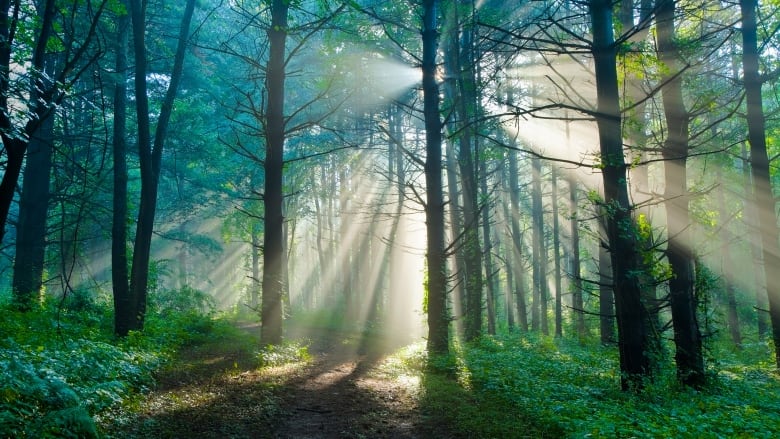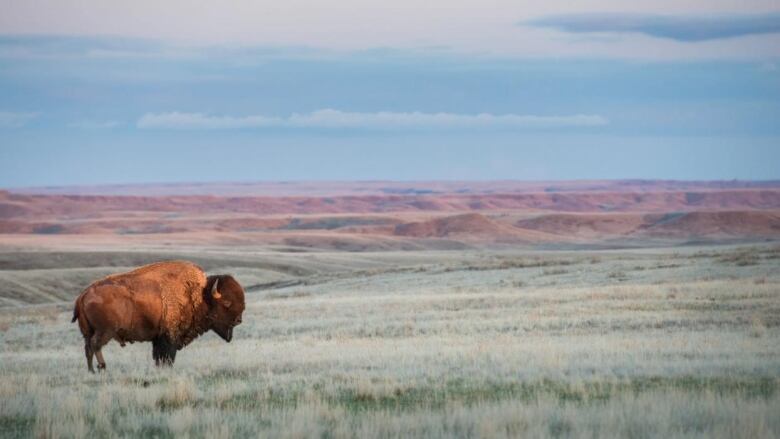OPINION | Nature as a solution for what ails us
Nature-based Solutions bring benefits for the economy, for Indigenous reconciliation, and for our well-being

This column is an opinion from Stephen Legault,a political and communications strategist based in Canmore.

When I was a kid, growing up in what seemed like a boundless sea of boreal forests in Northern Ontario, the woods, wetlands, and patchwork of a million lakes seemed never-ending.
I got to know the boreal on a very personal level, fishing its lakes and hunting with my grandfather and father. It was only much later that I learned that this green ring that circles the planet's northern-most climes might also be the answer to two of the world's most pressing challenges, climate change and the cataclysmic loss of biodiversity the web of life that supports all living things.
Recently federal Finance Minister ChrystiaFreeland released her fall economic update and in it was a re-commitment to Nature-based Solutions.
The federal pledge to plant two billion trees at a cost of more than $3 billion was the headline. Freeland and the Liberal government also committed more than $600 million to the conservation of native grasslands, wetlands, and peatlands, and nearly $100 million for a new Natural Climate Solutions for Agriculture fund.
For the last six months, I have been reading everything I can on Nature-based Solutions (NbS) to understand how they differ from the conservation approach I've practiced for three decades. What's new in this methodology? Is it really the best way to address climate change? (Spoiler alert: It isn't, but it's absolutely necessary never-the-less.)
The promise of NbS
As Canada embarks on a massive effort to address climate change and the loss of nature, while fighting a simultaneous battle against COVID-19, Nature-based Solutions hold the promise of tackling the economic and ecological challenges we face today.
The International Union for the Conservation of Nature identifies Nature-based Solutions as "actions to protect, sustainably manage, and restore natural or modified ecosystems, that address societal challenges effectively and adaptively, simultaneously providing human well-being and biodiversity benefits".
Nature-based Solutions sound a lot like a convenient repackaging of familiar calls to protect nature, for our own sake and for the sake of the planet. What sets NbS apart, however, is the systematic approach that it demands and its multiple benefits for people, our economy, for Indigenous reconciliation and for human well-being.
These benefits include investments in local trades, creation of jobs, and educational opportunities.

As Canada and the world struggle to "build back better" these important benefits become central to the federal government's plan for an economic recovery.
The Liberal spending commitments are enabling measures designed to make good on groundwork laid in previous budgets and the 2020 Speech from the Throne. Previously, the federal government signalled its support in applying NbS as a key approach in helping Canada realize its pledge of achieving net zero emissions by 2050.
Canada has set an ambitious agenda to protect 25 per cent of our landscapes by 2025 and 30 per cent by 2030. To reach these milestones we have got some heavy lifting to do. To put the task in perspective, 25 per cent of Canada is greater than the area of Manitoba, Saskatchewan and Alberta combined. We are less than half-way there.
Climate change is often cited as the challenge in need of a solution in NbS, but like all aspects of the fight to combat this crisis, this is only part of the answer.
Biodiversity the big winner
A review of the global body of work on NbS suggests that while the climate will certainly be a significant beneficiary of NbS investments, biodiversity conservation will be the big winner.
This is good news for Canada.
If we were making these investments just for the sake of addressing climate change, there would be more cost- and time-efficient ways of spending our tax dollars.
Nature-based Solutions, such as planting trees and protecting carbon-absorbing grasslands and peat bogs take time to demonstrate a return on investment. Trees planted in the cold northern ring of the boreal can take decades to perform their job of absorbing and sequestering carbon, and it can all be undone if a forest fire or logging operation removes those trees once again.
Where Canada can truly provide global leadership is by applying Nature-based Solutions to stem the devastating loss of nature from our most sensitive ecosystems. These include coastal old growth forests, such as those along British Columbia's wild western shores and its interior mountains, the peatlands that cover 12 per cent of Canada's landmass, and its native grasslands found in BC's interior, and across southern Alberta, Saskatchewan, and Manitoba.
Planting trees has been the masthead of the federal Liberals' approach to NbS. Planting them, however, is just the first part of the job. Protecting our existing forests, and better managing those not in protected areas is critical if we are to reach our climate and biodiversity goals.

Despite growing up in the North, I had no idea that Canada had the largest distribution of peatlands in the world! That bag of peat that I buy every spring for my garden contains one of the greatest storehouses of carbon on earth. Canada's peatlands overlap the geography occupied by the boreal woodlands, so combining conservation measures for both will result in significant gains.
As a resident of southern Alberta for the last three decades, I confess to a special affinity for grasslands. Only 25 per cent of Canada's native grasslands remain; agriculture, oil and gas development and other industrial development have claimed much of our original prairie ecosystems.
A Nature-based Solutions approach seeks to maximize the benefits to society of the conservation measures being implemented.
On Canada's short-grass prairie this might include significant tax and other economic incentives for capturing and storing carbon in the deep root systems of our native plants, and the creation of new economic opportunities when COVID-weary Canadians begin seeking new landscapes to explore after a year of lockdowns.
Most importantly, these efforts could help Canada keep its commitments to the protection of nature.
Like all proposed solutions to complex and far-reaching challenges, a Nature-based Solutions approach is only one part of the remedy to the sweeping ills that we face as a society.
Its implementation will be challenging, expensive and time-consuming, but its promise is rooted in its wide range of benefits to nature, our climate, and our human communities.
This column is an opinion. For more information about our commentary section, please readour FAQ.












_(720p).jpg)


 OFFICIAL HD MUSIC VIDEO.jpg)
.jpg)



























































































